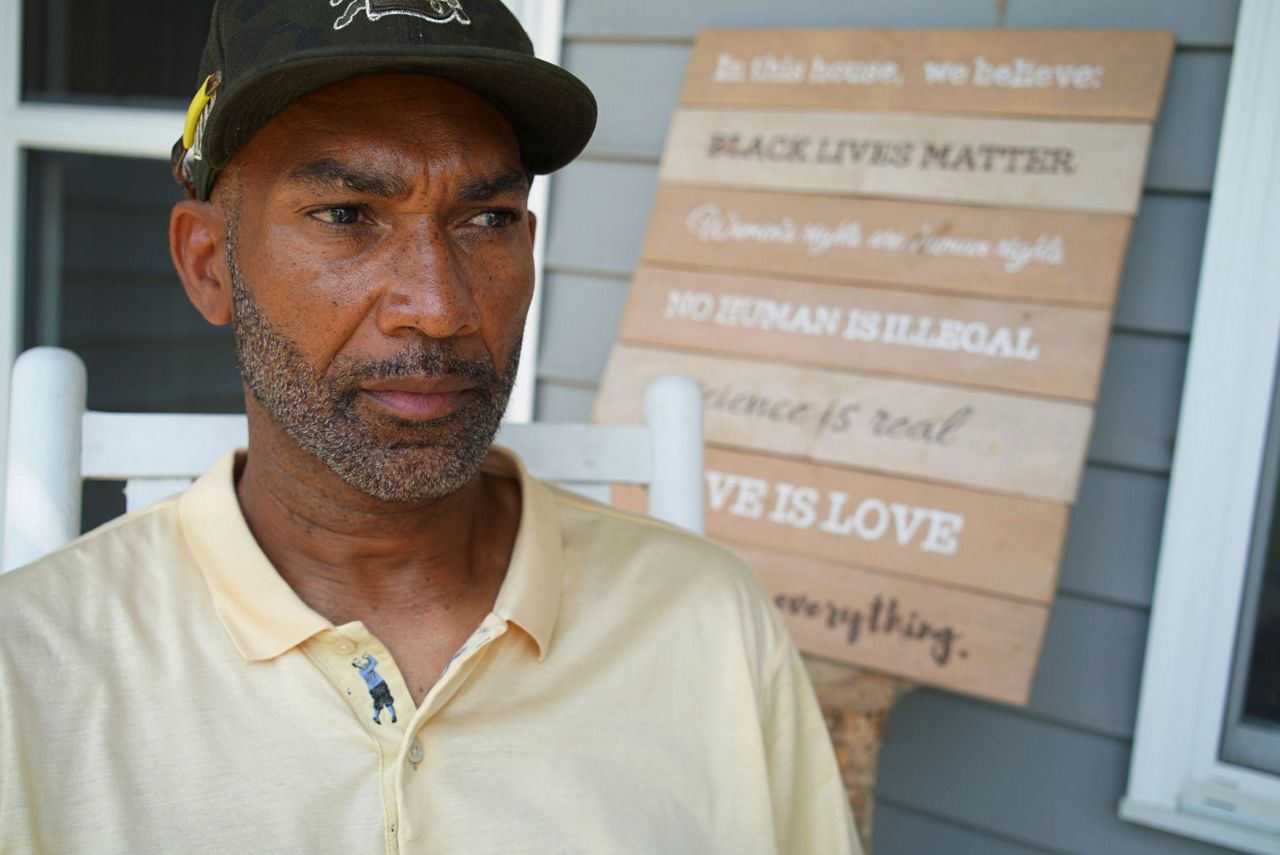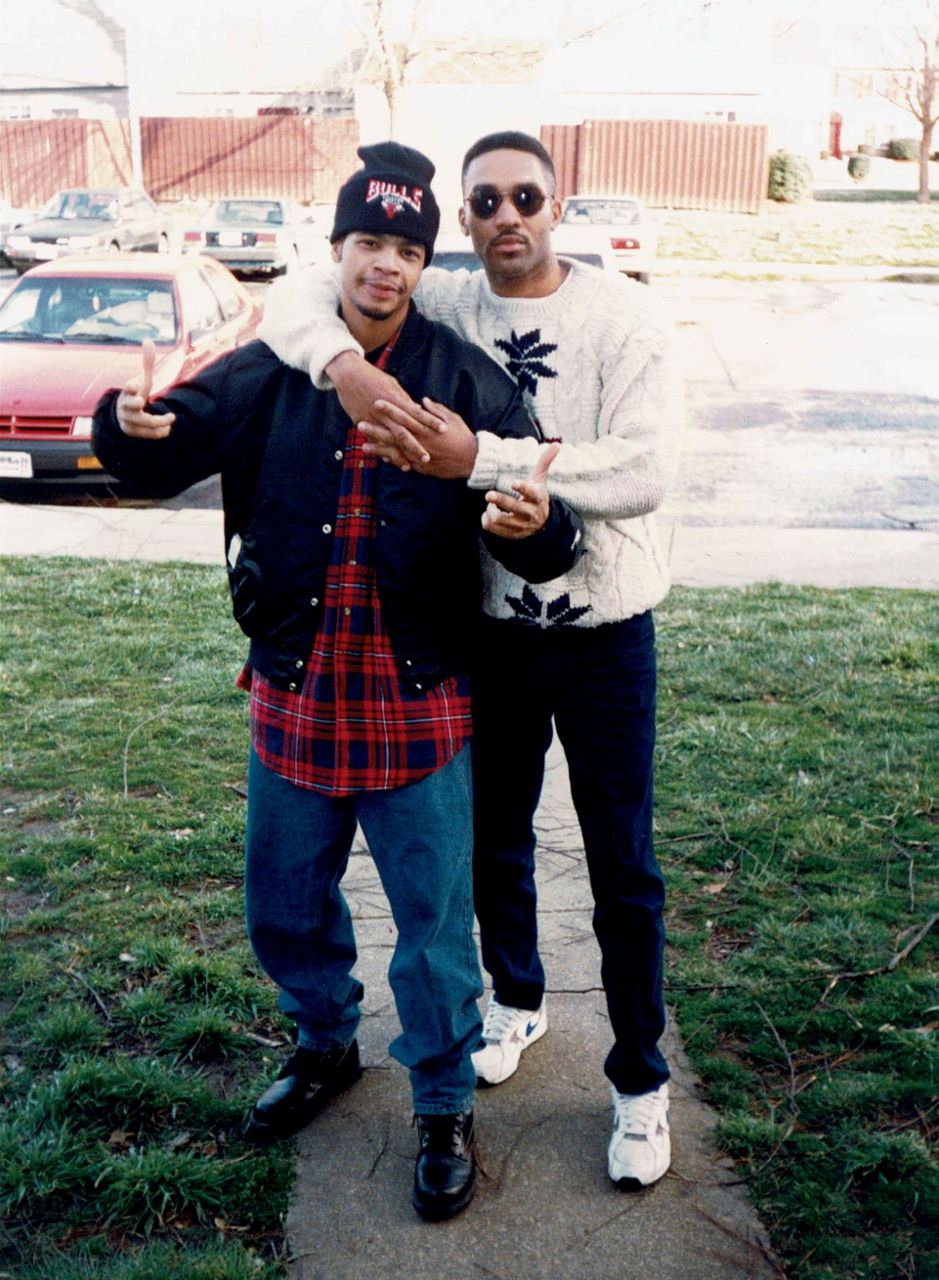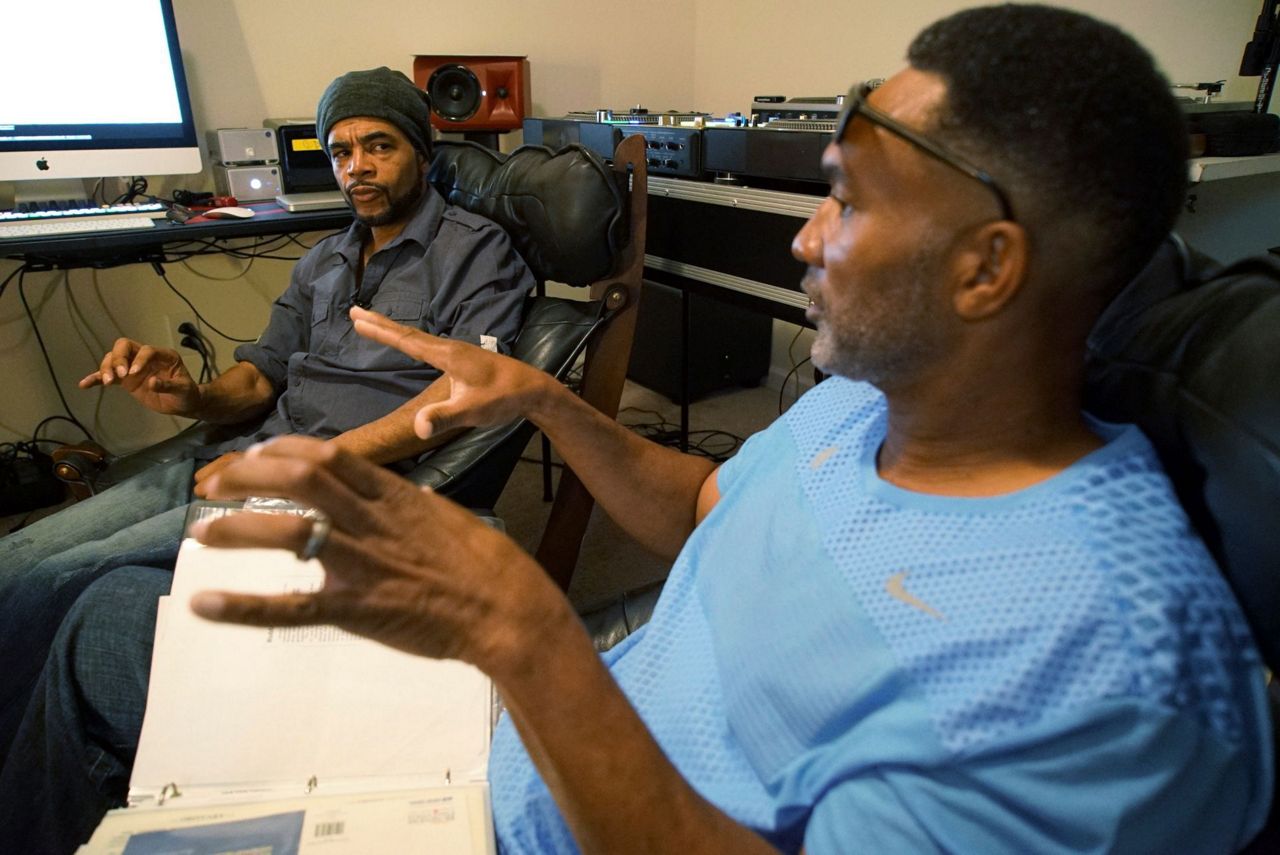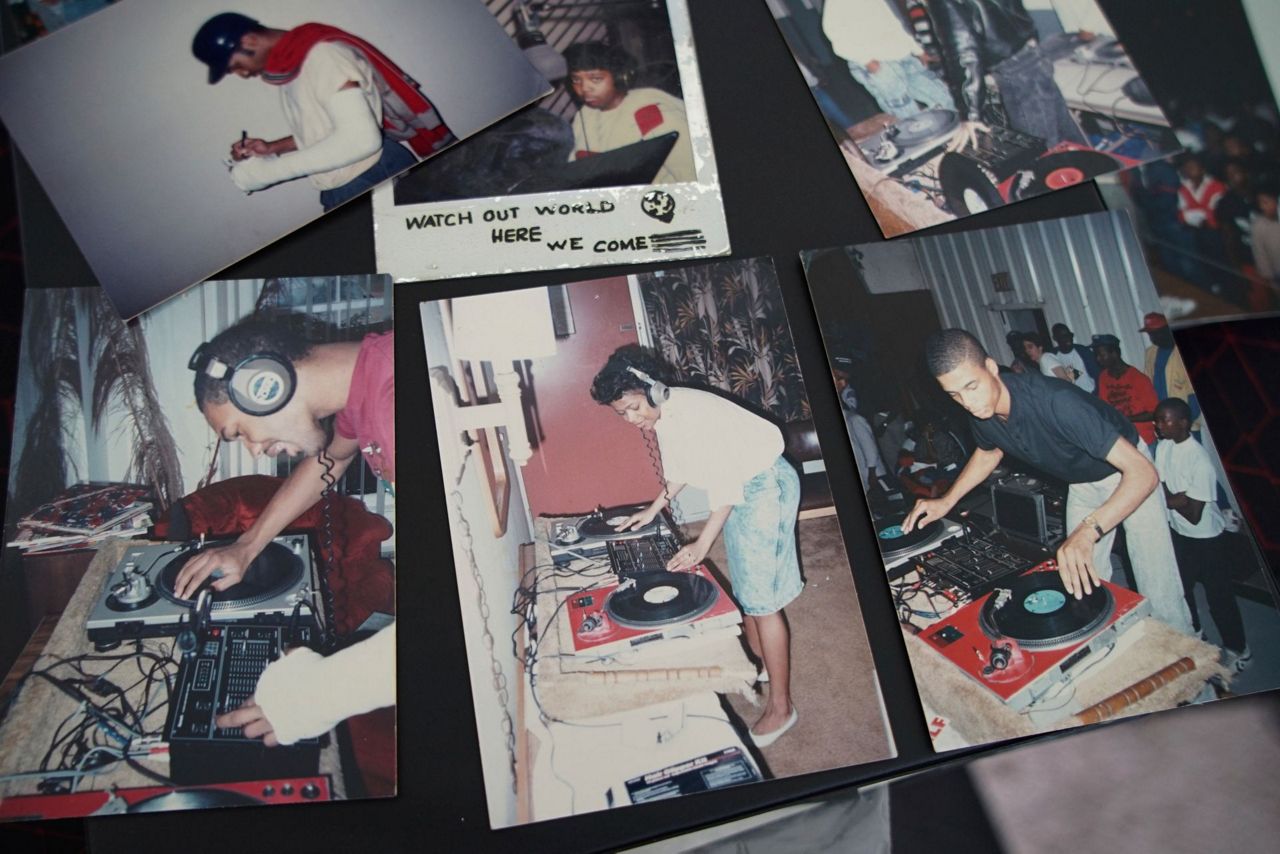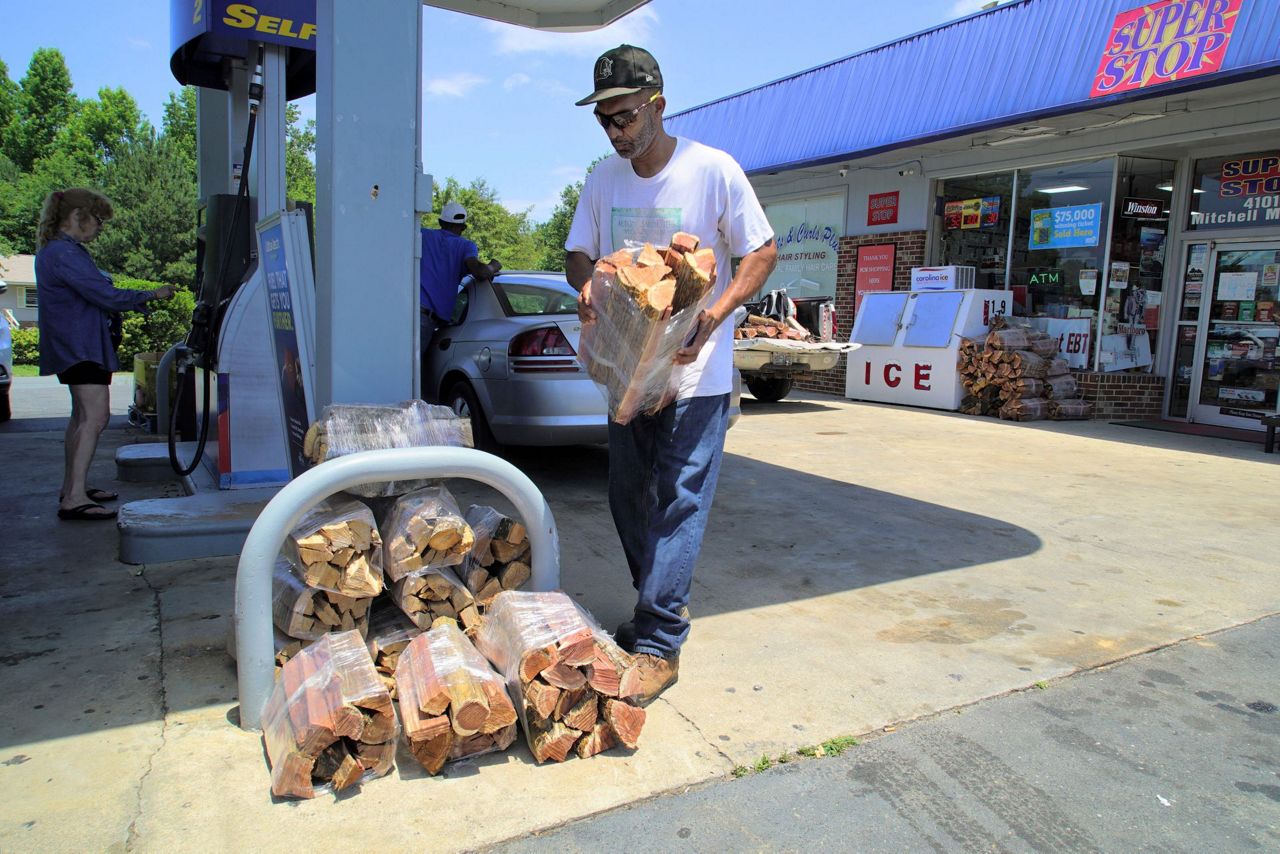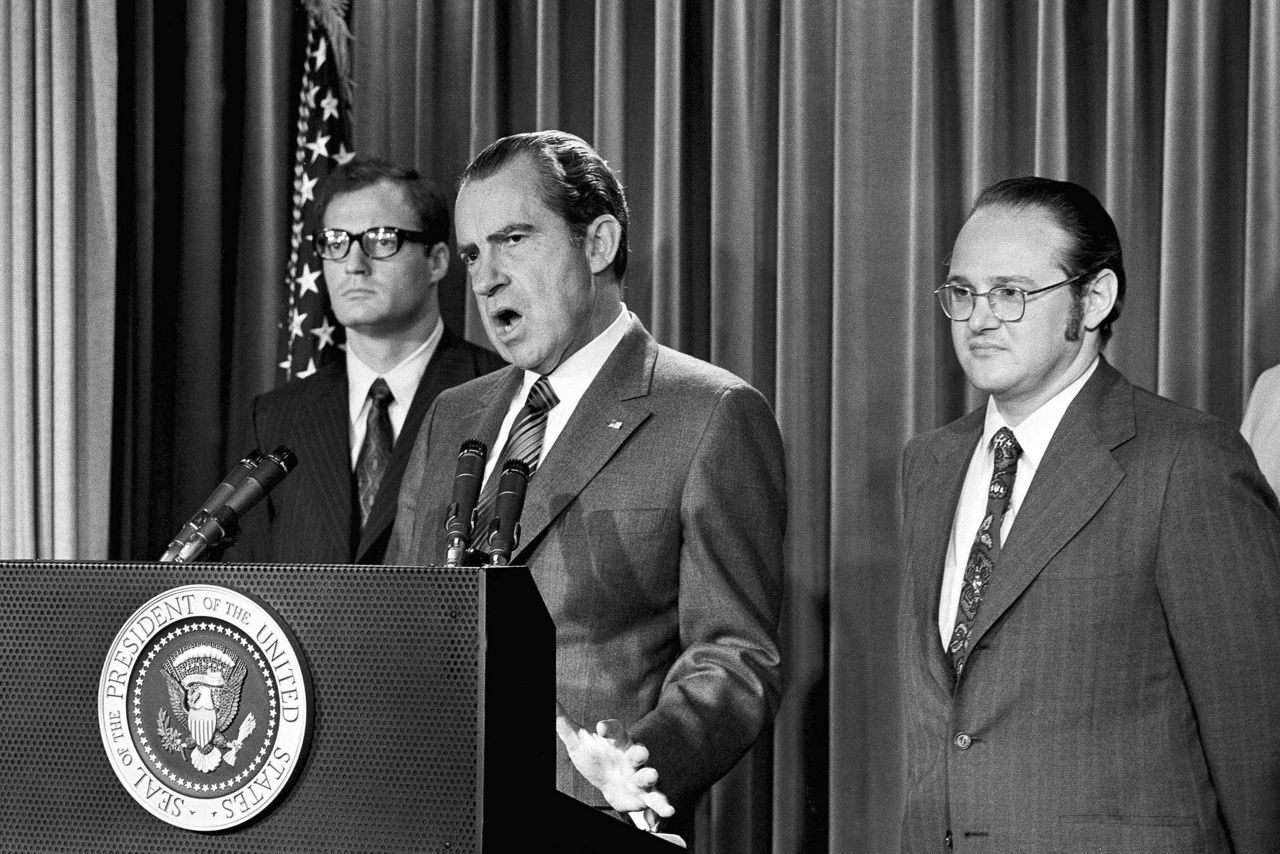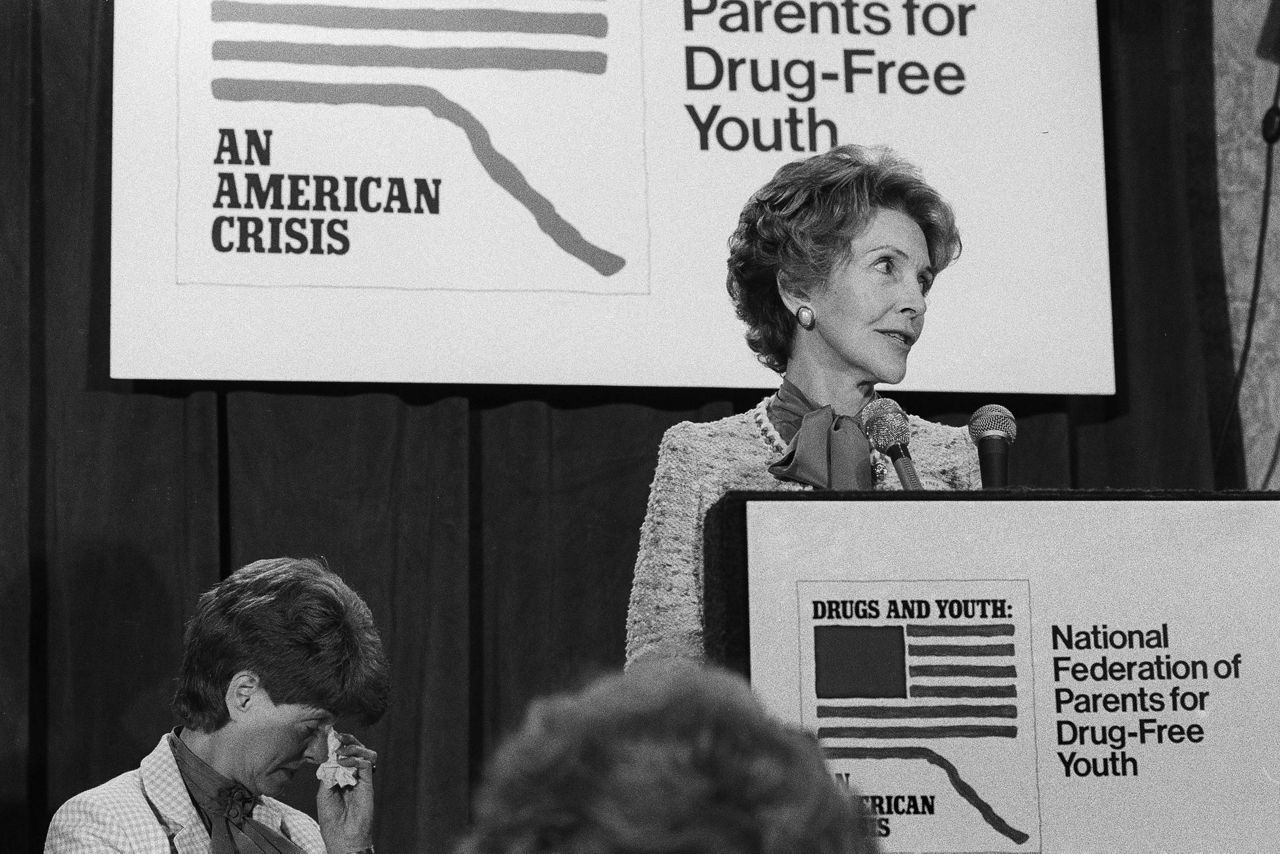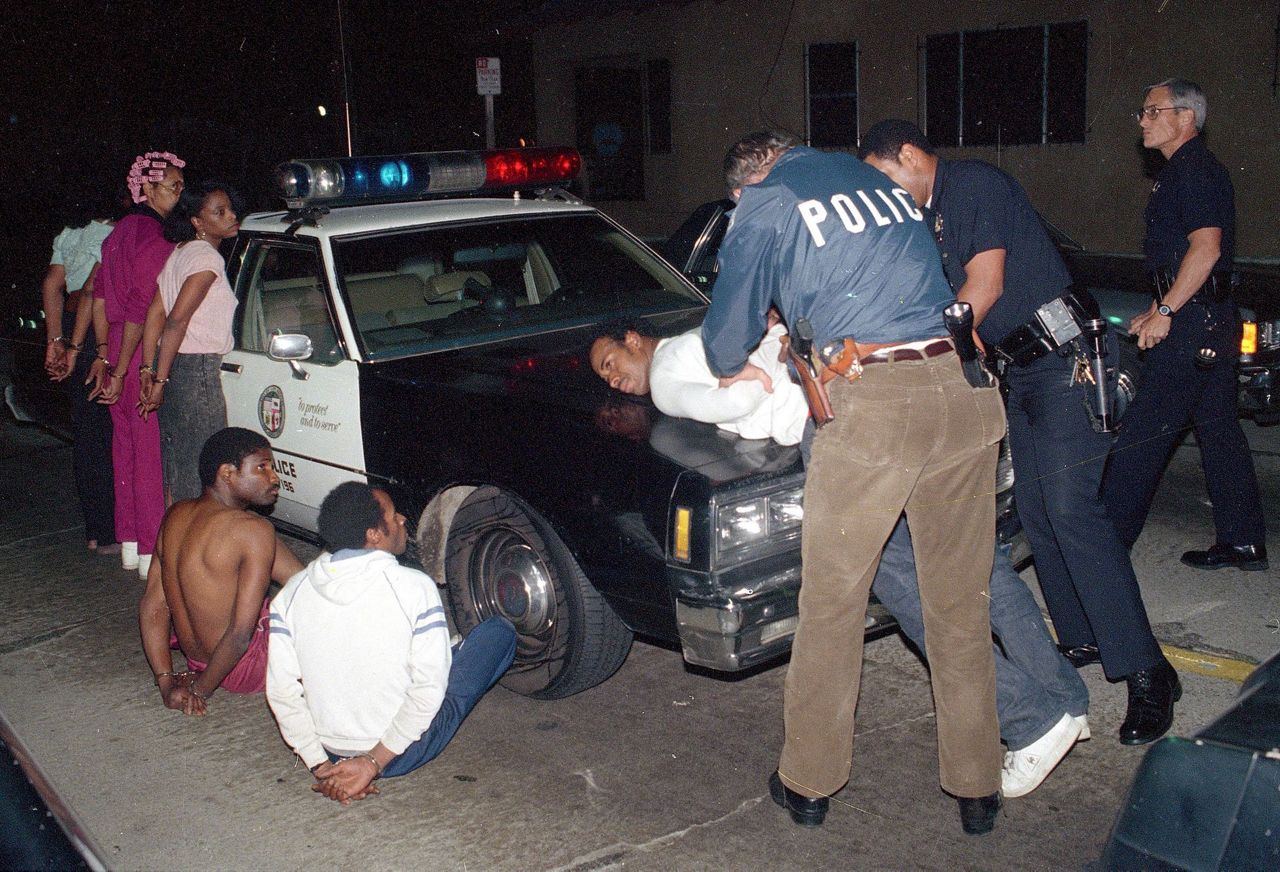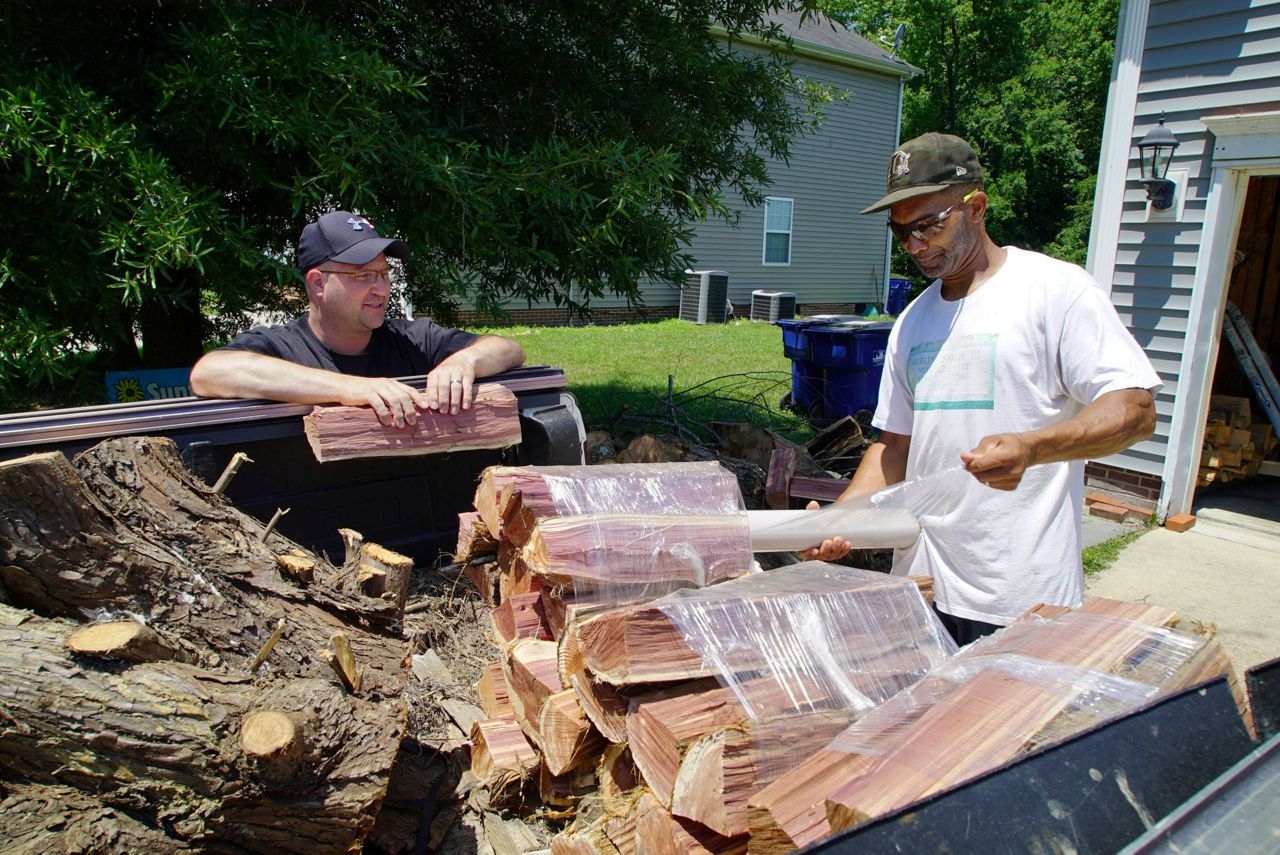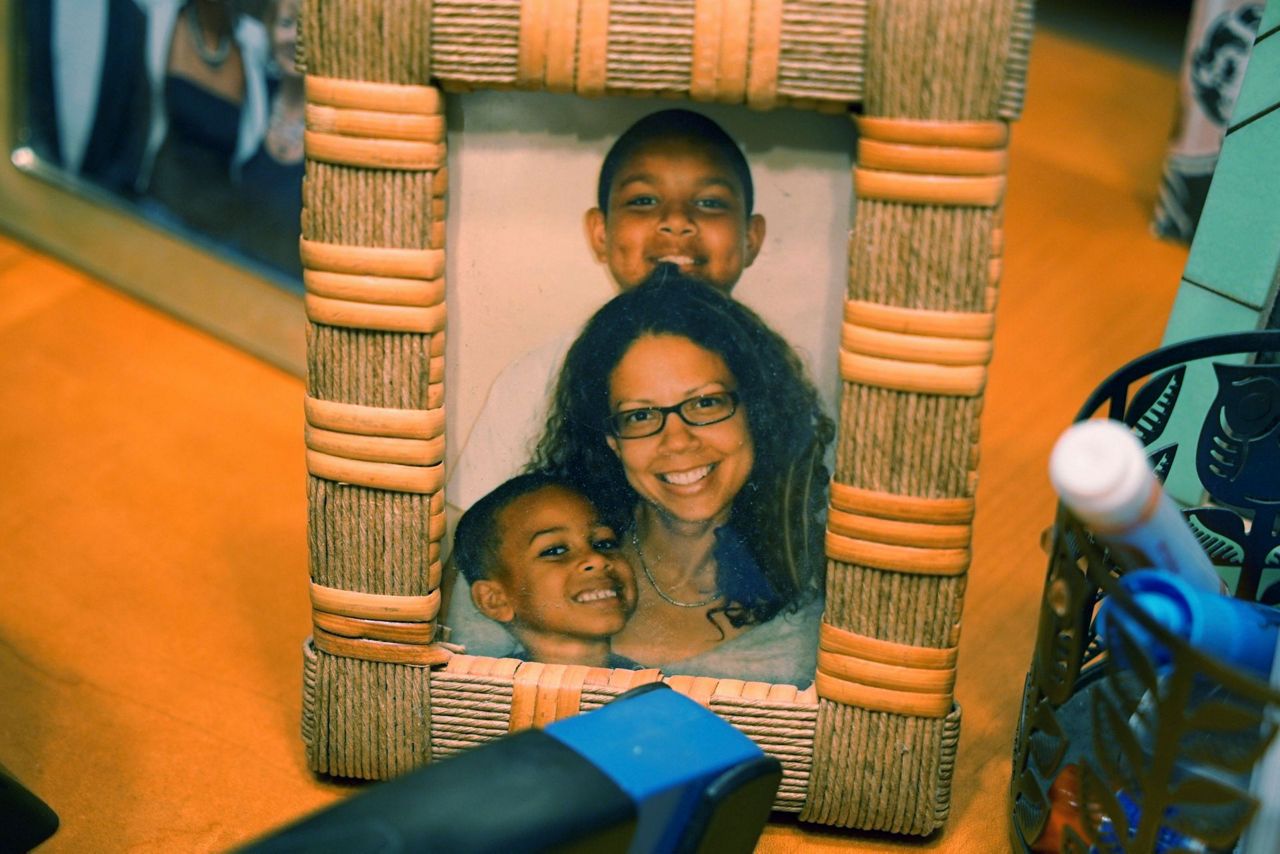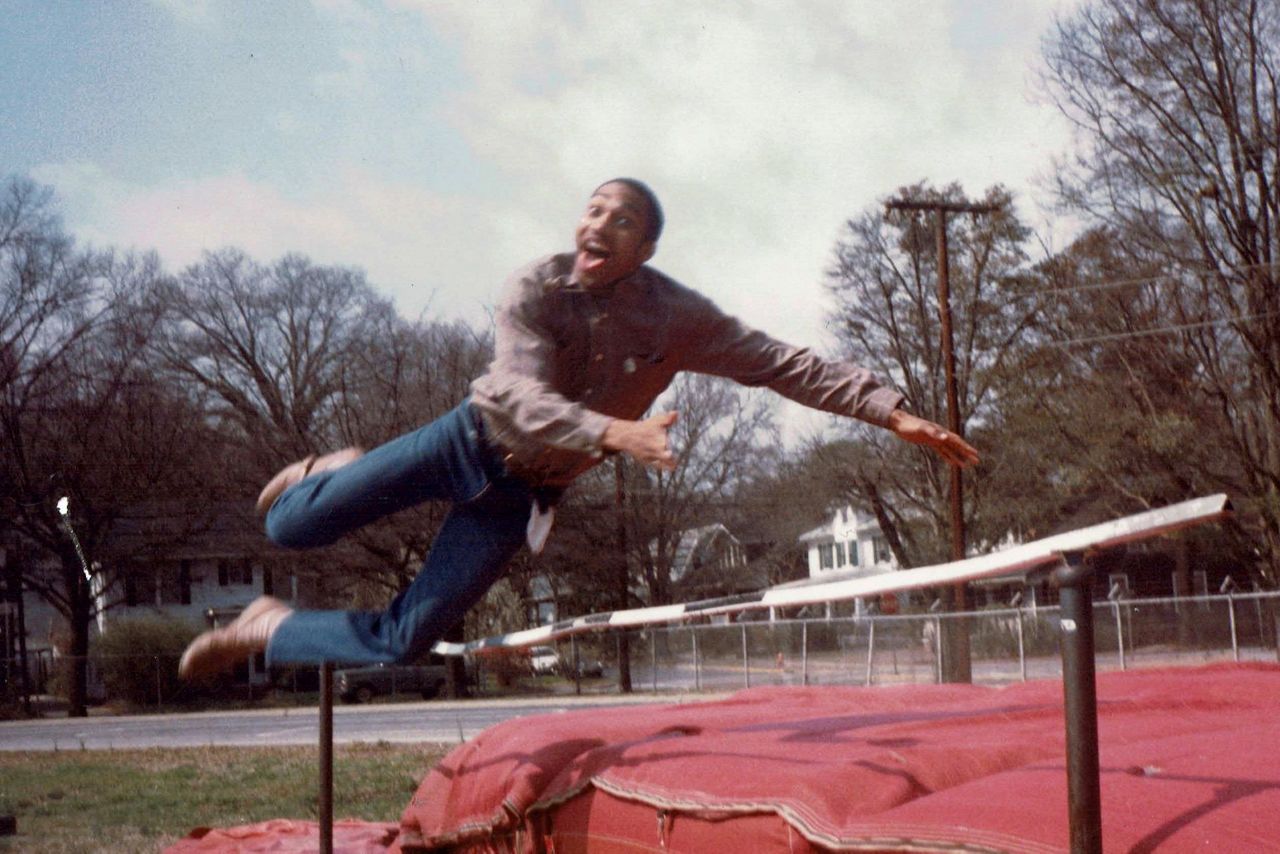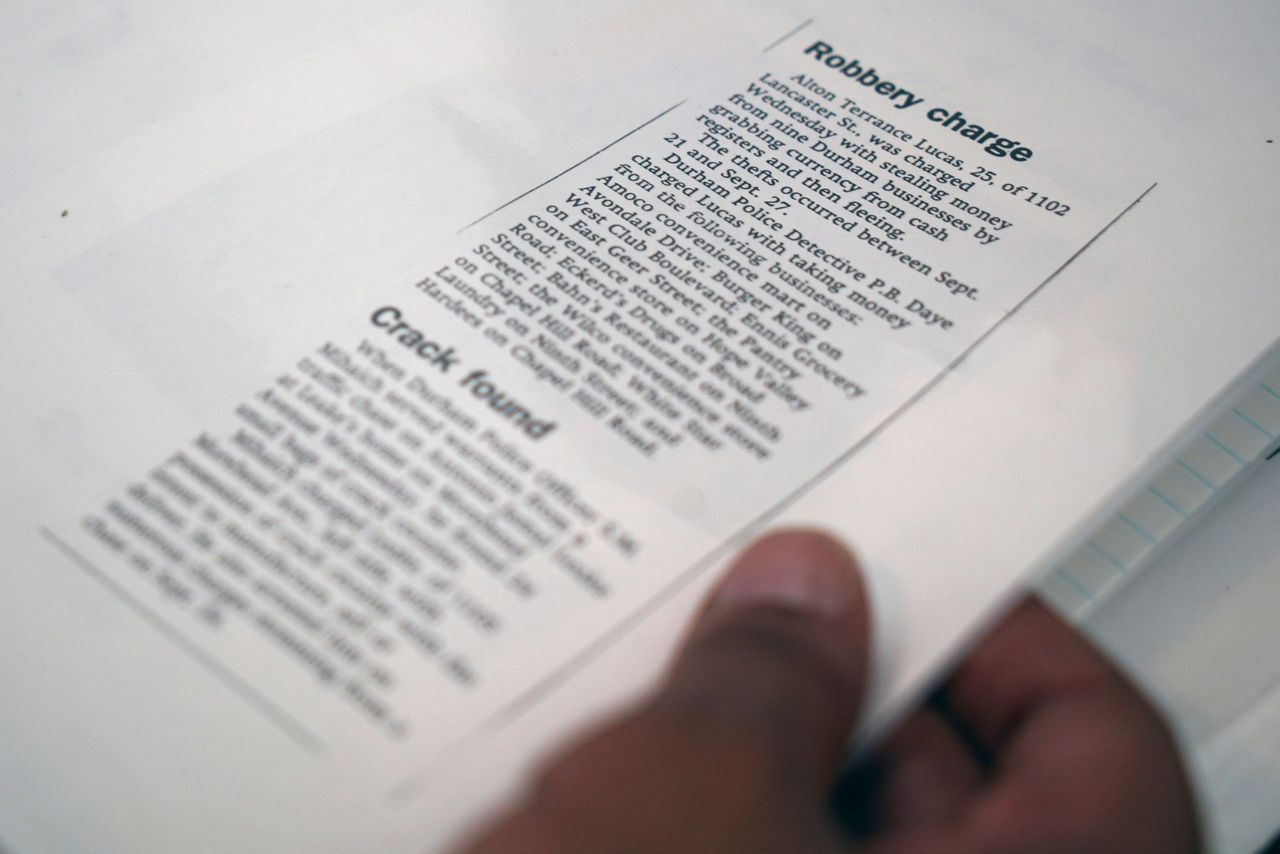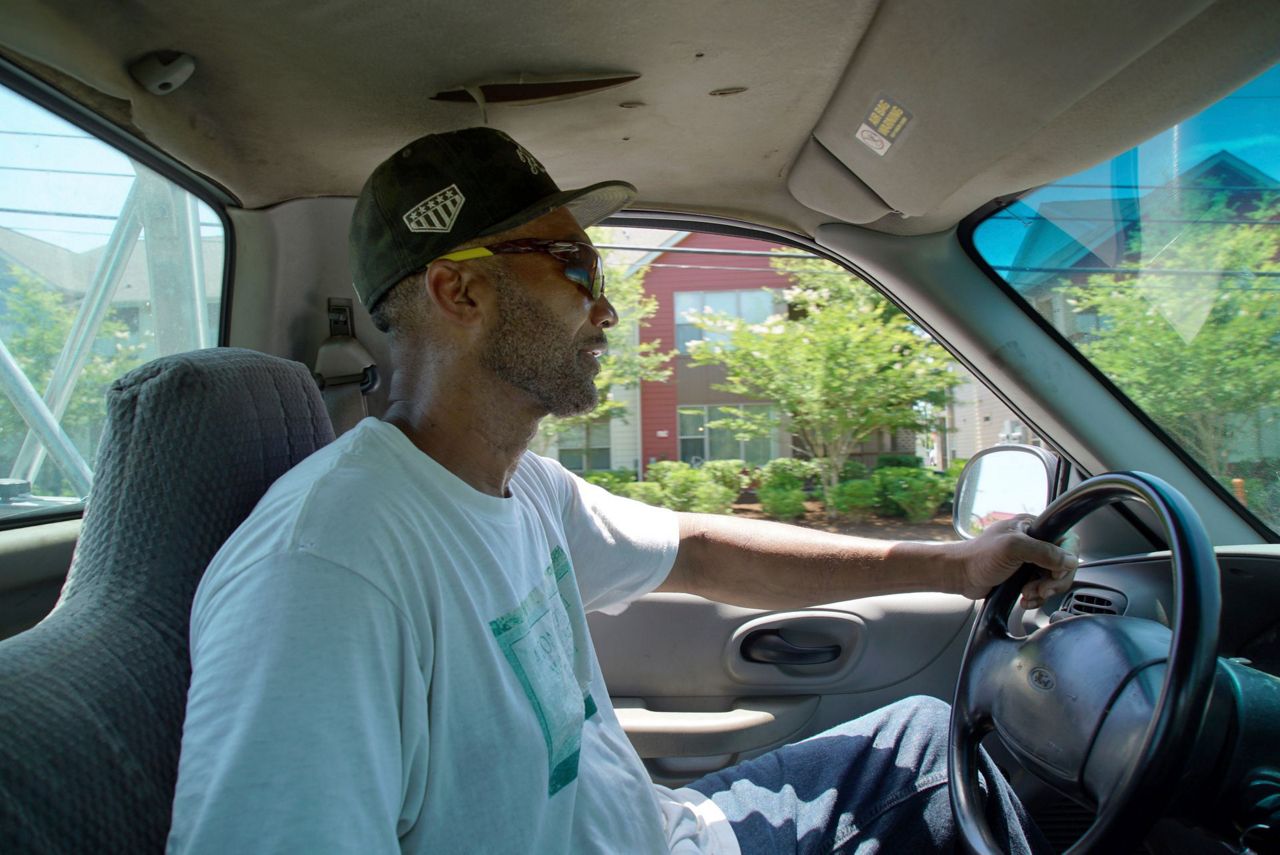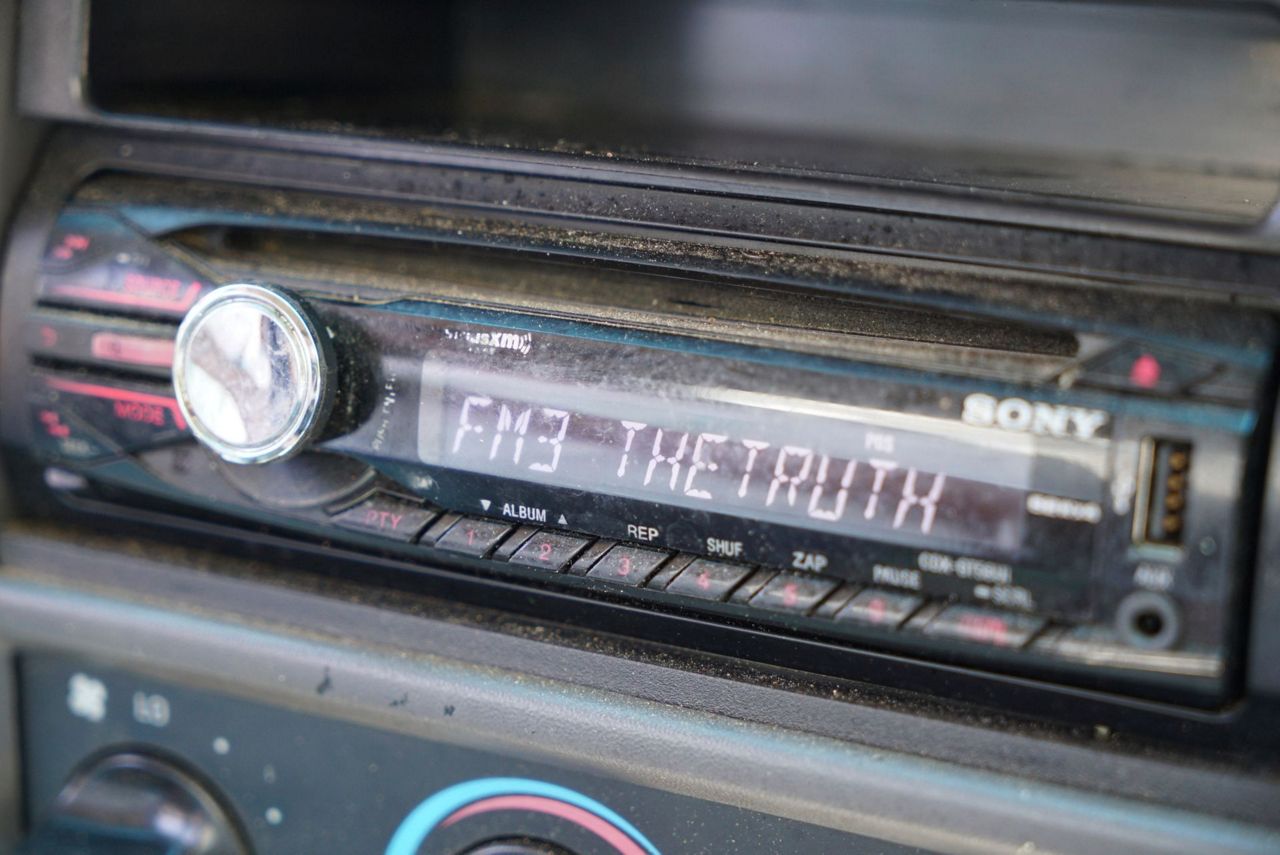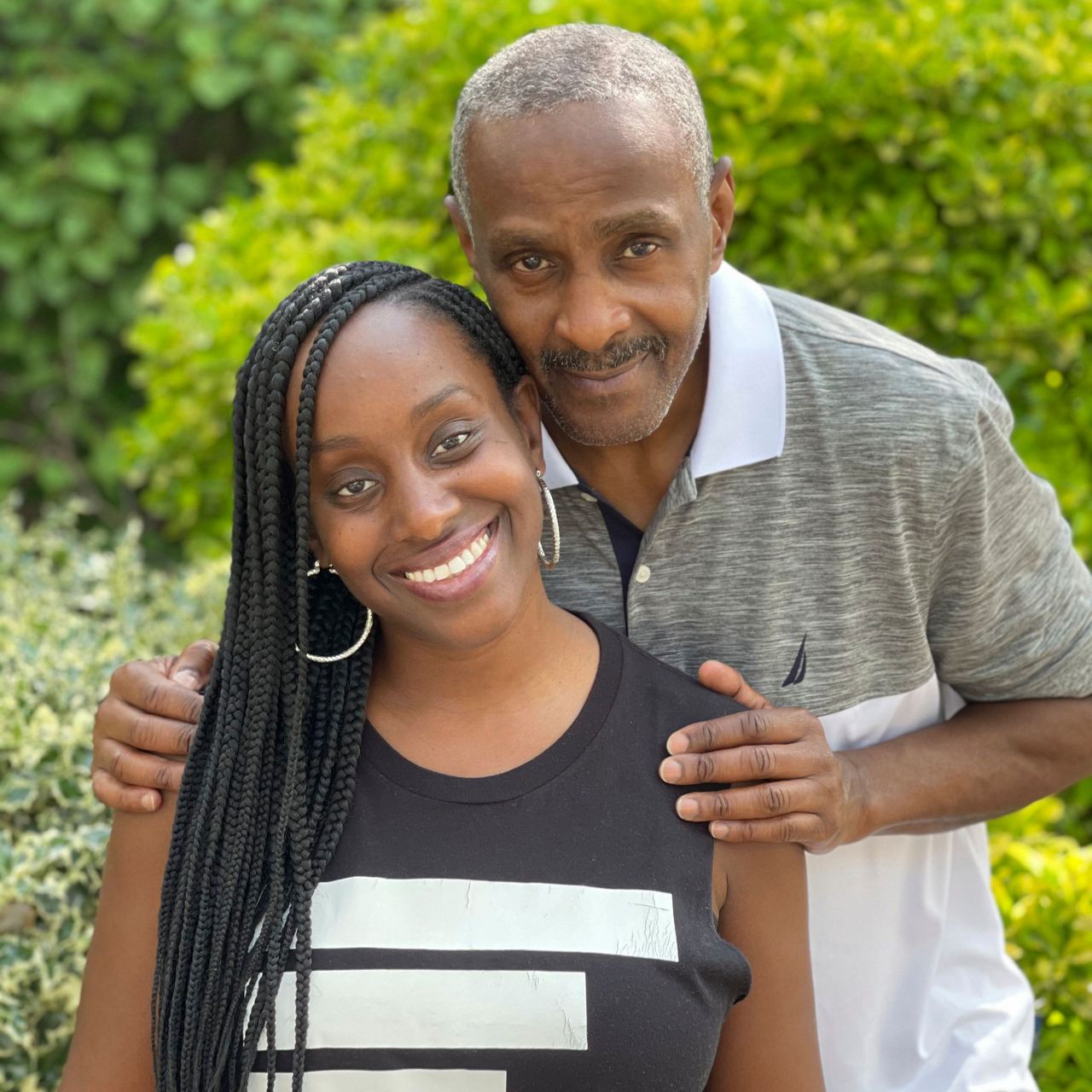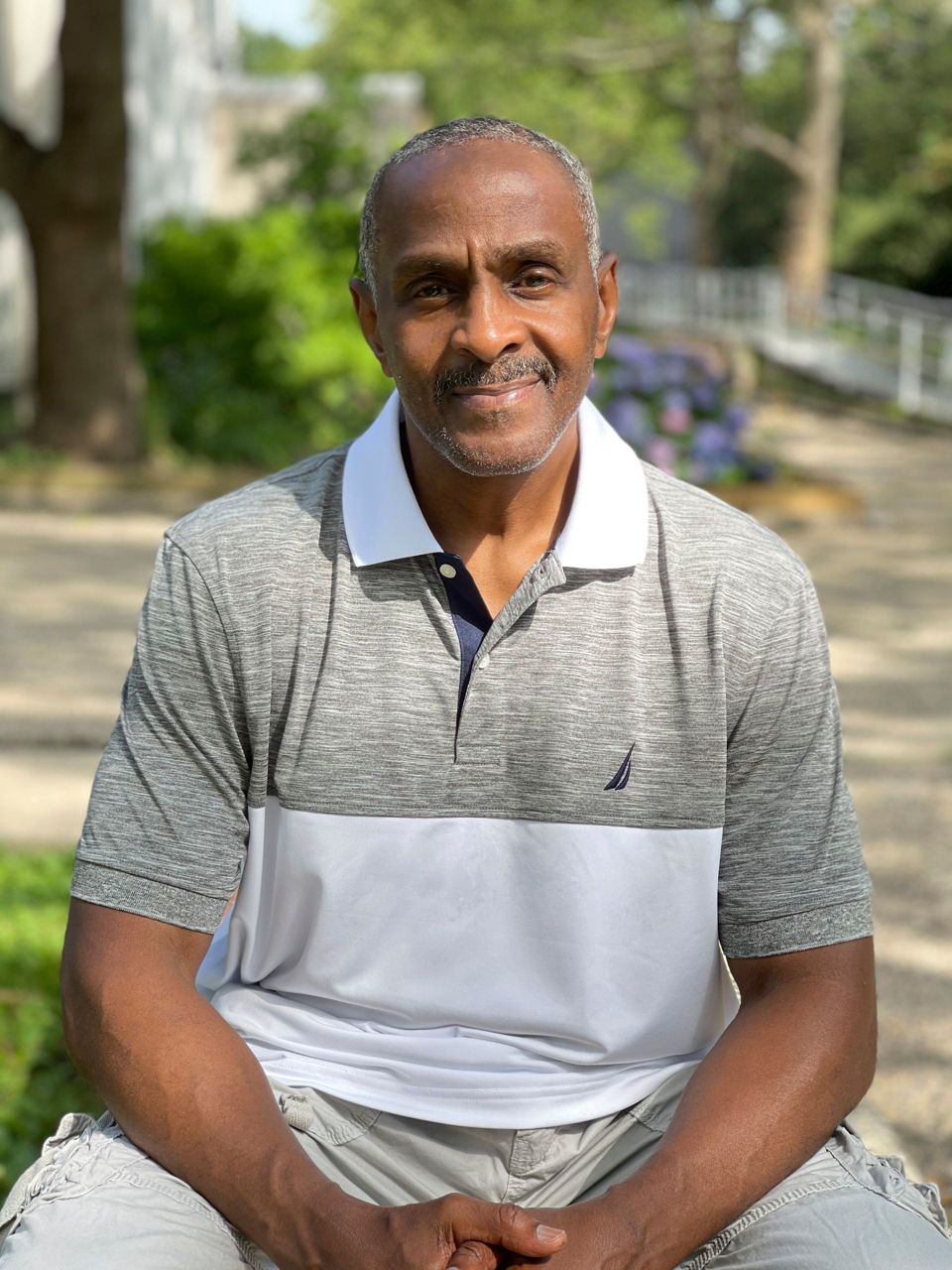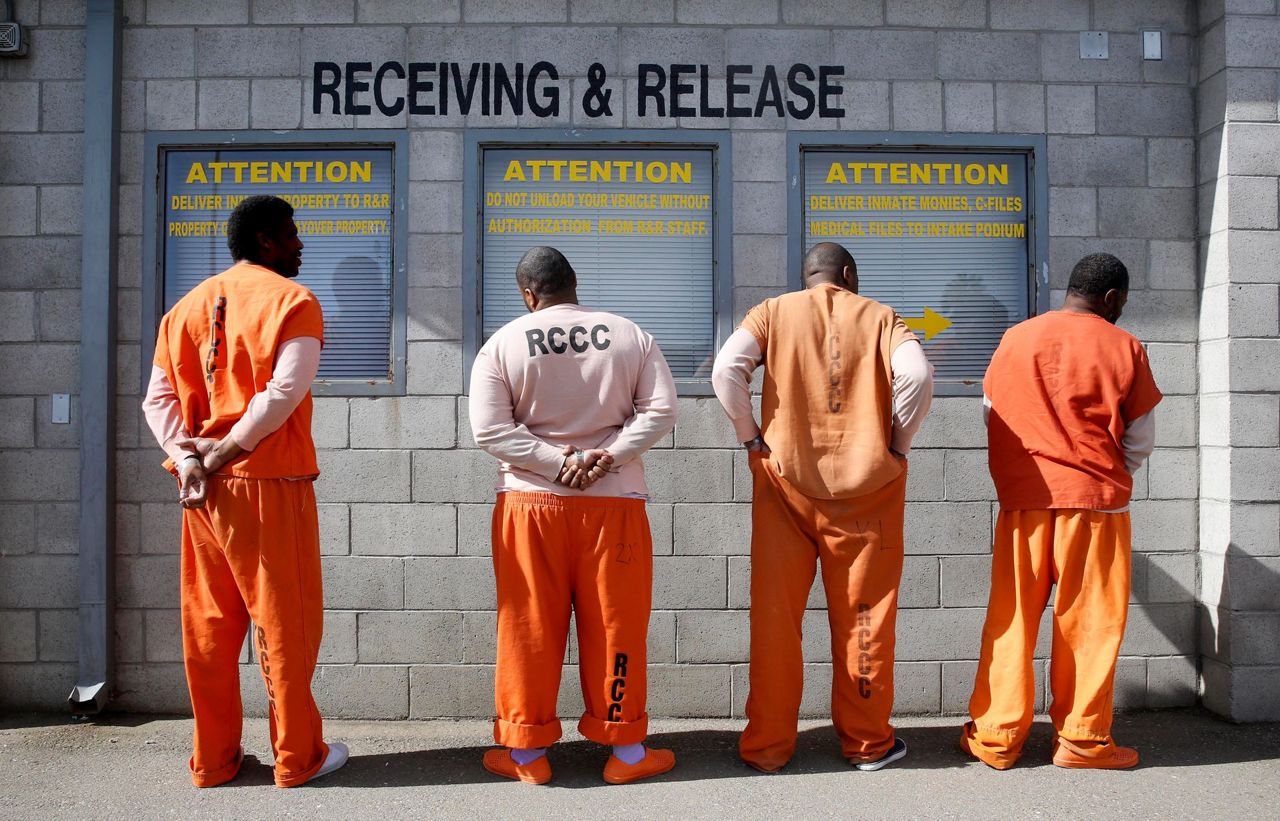Landscaping was hardly his lifelong dream.
As a teenager, Alton Lucas believed basketball or music would pluck him out of North Carolina and take him around the world. In the late 1980s, he was the right-hand man to his musical best friend, Youtha Anthony Fowler, who many hip hop and R&B heads know as DJ Nabs.
But rather than jet-setting with Fowler, Lucas discovered drugs and the drug trade at the height of the so-called war on drugs. Addicted to crack cocaine and involved in trafficking the drug, he faced decades-long imprisonment at a time when the drug abuse and violence plaguing major cities and working class Black communities were not seen as the public health issue that opioids are today.
By chance, Lucas received a rare bit of mercy. He got the kind of help that many Black and Latino Americans struggling through the crack epidemic did not: treatment, early release and what many would consider a fresh start.
“I started the landscaping company, to be honest with you, because nobody would hire me because I have a felony,” said Lucas. His Sunflower Landscaping got a boost in 2019 with the help of Inmates to Entrepreneurs, a national nonprofit assisting people with criminal backgrounds by providing practical entrepreneurship education.
Lucas was caught up in a system that imposes lifetime limits on most people who have served time for drug crimes, with little thought given to their ability to rehabilitate. In addition to being denied employment, those with criminal records can be limited in their access to business and educational loans, housing, child custody rights, voting rights and gun rights.
It’s a system that was born when Lucas was barely out of diapers.
Fifty years ago this summer, President Richard Nixon declared a war on drugs. Today, with the U.S. mired in a deadly opioid epidemic that did not abate during the coronavirus pandemic’s worst days, it is questionable whether anyone won the war.
Yet the loser is clear: Black and Latino Americans, their families and their communities. A key weapon was the imposition of mandatory minimums in prison sentencing. Decades later those harsh federal and state penalties led to an increase in the prison industrial complex that saw millions of people, primarily of color, locked up and shut out of the American dream.
An Associated Press review of federal and state incarceration data shows that, between 1975 and 2019, the U.S. prison population jumped from 240,593 to 1.43 million Americans. Among them, about 1 in 5 people were incarcerated with a drug offense listed as their most serious crime.
The racial disparities reveal the war's uneven toll. Following the passage of stiffer penalties for crack cocaine and other drugs, the Black incarceration rate in America exploded from about 600 per 100,000 people in 1970 to 1,808 in 2000. In the same timespan, the rate for the Latino population grew from 208 per 100,000 people to 615, while the white incarceration rate grew from 103 per 100,000 people to 242.
Gilberto Gonzalez, a retired special agent for the Drug Enforcement Administration who worked for more than 20 years taking down drug dealers and traffickers in the U.S., Mexico and in South America, said he’ll never forget being cheered on by residents in a predominantly Hispanic neighborhood near Los Angeles as he led away drug traffickers in handcuffs.
“That gave me a sense of the reality of the people that live in these neighborhoods, that are powerless because they’re afraid that the drug dealers that control the street, that control the neighborhood are going to do them and their children harm,” said Gonzalez, 64, who detailed his field experiences in the recently released memoir “Narco Legenda.”
“We realized then that, along with dismantling (drug trafficking) organizations, there was also a real need to clean up communities, to go to where the crime was and help people that are helpless,” he said.
Still, the law enforcement approach has led to many long-lasting consequences for people who have since reformed. Lucas still wonders what would happen for him and his family if he no longer carried the weight of a drug-related conviction on his record.
Even with his sunny disposition and close to 30 years of sober living, Lucas, at age 54, cannot pass most criminal background checks. His wife, whom he’d met two decades ago at a fatherhood counseling conference, said his past had barred him from doing things as innocuous as chaperoning their children on school field trips.
“It’s almost like a life sentence,” he said.
___
Although Nixon declared the war on drugs on June 17, 1971, the U.S. already had lots of practice imposing drug prohibitions that had racially skewed impacts. The arrival of Chinese migrants in the 1800s saw the rise of criminalizing opium that migrants brought with them. Cannabis went from being called “reefer” to “marijuana,” as a way to associate the plant with Mexican migrants arriving in the U.S. in the 1930s.
By the time Nixon sought reelection amid the anti-Vietnam War and Black power movements, criminalizing heroin was a way to target activists and hippies. One of Nixon’s domestic policy aides, John Ehrlichman, admitted as much about the war on drugs in a 22-year-old interview published by Harper’s Magazine in 2016.
Experts say Nixon’s successors, Ronald Reagan, George H.W. Bush and Bill Clinton, leveraged drug war policies in the following decades to their own political advantage, cementing the drug war’s legacy. The explosion of the U.S. incarceration rate, the expansion of public and private prison systems and the militarization of local police forces are all outgrowths of the drug war.
Federal policies, such as mandatory minimum sentencing for drug offenses, were mirrored in state legislatures. Lawmakers also adopted felony disenfranchisement, while also imposing employment and other social barriers for people caught in drug sweeps.
The domestic anti-drug policies were widely accepted, mostly because the use of illicit drugs, including crack cocaine in the late 1980s, was accompanied by an alarming spike in homicides and other violent crimes nationwide. Those policies had the backing of Black clergy and the Congressional Black Caucus, the group of African-American lawmakers whose constituents demanded solutions and resources to stem the violent heroin and crack scourges.
“I think people often flatten this conversation,” said Kassandra Frederique, executive director of the Drug Policy Alliance, a New York-based nonprofit organization pushing decriminalization and safe drug use policies.
“If you’re a Black leader 30 years ago, you’re grabbing for the first (solution) in front of you,” said Frederique, who is Black. “A lot of folks in our community said, ‘OK, get these drug dealers out of our communities, get this crack out of our neighborhood. But also, give us treatment so we can help folks.’”
The heavy hand of law enforcement came without addiction prevention resources, she said.
Use of crack rose sharply in 1985, and peaked in 1989, before quickly declining in the early 1990s, according to a Harvard study.
Drug sales and use were concentrated in cities, particularly those with large Black and Latino populations, although there were spikes in use among white populations, too. Between 1984 and 1989, crack was associated with a doubling of homicides of Black males aged 14 to 17. By the year 2000, the correlation between crack cocaine and violence faded amid waning profits from street sales.
Roland Fryer, an author of the Harvard study and a professor of economics, said the effects of the crack epidemic on a generation of Black families and Black children still haven't been thoroughly documented. A lack of accountability for the war on drugs bred mistrust of government and law enforcement in the community, he said.
“People ask why Black people don’t trust (public) institutions,” said Fryer, who is Black. “It’s because we have watched how we’ve treated opioids — it’s a public health concern. But crack (cocaine) was, ‘lock them up and throw away the key, what we need is tougher sentencing.’”
Another major player in creating hysteria around drug use during the crack era: the media. On June 17, 1986, 15 years to the day after Nixon declared the drug war, NBA draftee Len Bias died of a cocaine-induced heart attack on the University of Maryland campus.
Coverage was frenzied and coupled with racist depictions of crack addiction in mostly Black and Latino communities. Within weeks of Bias’s death, the U.S. House of Representatives drafted the Anti-Abuse Act of 1986.
The law, passed and signed by Reagan that October, imposed mandatory federal sentences of 20 years to life in prison for violating drug laws. The law also made possession and sale of crack rocks harsher than that of powder cocaine.
The basketball player's death could have been one of the off-ramps in Lucas’s spiral into crack addiction and dealing. By then, he could make $10,000 in four to five hours selling the drug.
“One of the things that I thought would help me, that I thought would be my rehab, was when Len Bias died,” Lucas said. “I thought, if they showed me evidence (he) died from an overdose of smoking crack cocaine, as much as I loved Len Bias, that I would give it up.”
“I did not quit,” he said.
He was first introduced to crack cocaine in 1986, but kept his drug use largely hidden from his friends and family.
“What I didn’t know at the time was that this was a different type of chemical entering my brain and it was going to change me forever,” Lucas said. “Here I am on the verge of being the right-hand man to DJ Nabs, to literally travel the world. That’s how bad the drug did me.”
By 1988, Fowler’s music career had outgrown Durham. He and Lucas moved to Atlanta and, a few years later, Fowler signed a deal to become the official touring DJ for the hip hop group Kris Kross under famed music producer Jermaine Dupri’s So So Def record label. Fowler and the group went on to open for pop music icon Michael Jackson on the European leg of the “Dangerous” tour.
Lucas, who began trafficking crack cocaine between Georgia and North Carolina, never joined his best friend on the road. Instead, he slipped further into his addiction and returned to Durham, where he took a short-lived job as a preschool instructor.
When he lacked the money to procure drugs to sell or to use, Lucas resorted to robbing businesses for quick cash. He claims that he was never armed when he robbed “soft targets,” like fast food restaurants and convenience stores.
Lucas spent four and a half years in state prison for larceny after robbing several businesses to feed his addiction. Because his crimes were considered nonviolent, Lucas learned in prison that he was eligible for an addiction treatment program that would let him out early. But if he violated the terms of his release or failed to complete the treatment, Lucas would serve more than a decade in prison on separate drug trafficking charges under a deal with the court.
He accepted the deal.
After his release from prison and his graduation from the treatment program, Fowler paid out of his pocket to have his friend’s fines and fees cleared. That’s how Lucas regained his voting rights.
On a recent Saturday, the two best friends met up to talk in depth about the secret that Lucas intentionally kept from Fowler. The DJ learned of his friend's addiction after seeing a Durham newspaper clipping that detailed the string of robberies.
Sitting in Fowler’s home, Lucas told his friend that he doesn’t regret not being on the road or missing out on the fringe benefits from touring.
“All I needed was to be around you,” Lucas said.
“Right,” Fowler replied, choking up and wiping tears from his eyes.
Lucas continued: “You know, when I was around you, when there was a party or whatnot, my job, just out of instinct, was to watch your back.”
In a separate interview, Fowler, who is a few years younger than Lucas, said, “I just wanted my brother on the road with me. To help protect me. To help me be strong. And I had to do it by my damn self. And I didn’t like that. That’s what it was.”
___
Not everyone was as lucky as Lucas. Often, a drug offense conviction in combination with a violent gun offense carried much steeper penalties. At the heights of the war on drugs, federal law allowed violent drug offenders to be prosecuted in gang conspiracy cases, which often pinned homicides on groups of defendants, sometimes irrespective of who pulled the trigger.
These cases resulted in sentences of life imprisonment without the possibility of parole, a punishment disproportionately doled out to Black and Latino gang defendants.
That’s the case for Bill Underwood, who was a successful R&B and hip hop music promoter in New York City in the late ‘70s through the ’80s, before his 33-year incarceration. A judge granted him compassionate release from federal custody in January, noting his lauded reputation as a mentor to young men in prison and his high-risk exposure to COVID-19 at age 67.
As the AP reported in 1990, Underwood was found guilty and sentenced to life without parole for racketeering, racketeering conspiracy and narcotics conspiracy, as part of a prosecution that accused his gang of committing six murders and of controlling street-level drug distribution.
“I actually short-changed myself, and my family and my people, by doing what I did,” said Underwood, who acknowledges playing a large part in the multimillion-dollar heroin trade, as a leader of a violent Harlem gang from the 1970s through the 1980s.
Underwood is now a senior fellow with The Sentencing Project, a nonprofit pushing for an end to life imprisonment. He testified to Congress in June that his punishment was excessive.
“As human beings, we are capable of painful yet transformative self reflection, maturity, and growth, and to deny a person this opportunity is to deny them their humanity,” he said in the testimony.
Though he feels the system is broken, Brett Roman Williams, a Philadelphia-based independent filmmaker and anti-gun violence advocate, said a lack of counseling and support for people re-entering society after incarceration has serious consequences.
Williams grew up watching his older brother, Derrick, serve time in prison for a serious drug offense. But in 2016, his brother — who discouraged young people from making choices similar to his own — was killed by gunfire in Philadelphia less than three weeks after he left prison, where he had been held on a parole violation.
“We do need reform, we do need opportunities and equity within our system of economics. But we all have choices,” Williams said, adding that those were “the principles that my brother stood on.”
Rep. Cori Bush of St. Louis, following similar action by several members of Congress before her, last month introduced legislation to decriminalize all drugs and invest in substance abuse treatment.
“Growing up in St. Louis, the War on Drugs disappeared Black people, not drug use,” Bush, who is Black, wrote in a statement sent to the AP. “Over the course of two years, I lost 40 to 50 friends to incarceration or death because of the War on Drugs. We became so accustomed to loss and trauma that it was our normal.”
___
The deleterious impacts of the drug war have, for years, drawn calls for reform and abolition from mostly left-leaning elected officials and social justice advocates. Many of them say that in order to begin to unwind or undo the war on drugs, all narcotics must be decriminalized or legalized, with science-based regulation.
Drug abuse prevention advocates, however, claim that broad drug legalization poses more risks to Americans than it would any benefits.
Provisional data released in December from the Centers for Disease Control and Prevention show overdose deaths from illicit drug use continued to rise amid the global COVID-19 pandemic. And according to the latest Drug Enforcement Administration narcotics threat assessment released in March, the availability of drugs such as fentanyl, heroin and cocaine remained high or plateaued last year. Domestic and transnational drug trade organizations generate tens of billions of dollars in illicit proceeds from sales annually in the U.S., the DEA said.
“Many people think drug prevention is ‘just say no,’ like Nancy Reagan did in the '80s, and we know that did not work,” said Becky Vance, CEO of the Texas-based agency Drug Prevention Resources, which has advocated for evidenced-based anti-drug and alcohol abuse education for more than 85 years.
“As a person in long-term recovery, I know firsthand the harms of addiction,” said Vance, who opposes blanket recreational legalization of illicit drugs. “I believe there has to be another way, without legalizing drugs, to reform the criminal justice system and get rid of the inequities.”
Frederique, of the Drug Policy Alliance, said reckoning with the war on drugs must start with reparations for the generations senselessly swept up and destabilized by racially biased policing.
“This was an intentional policy choice,” Frederique said. “We don’t want to end the war on drugs, and then in 50 years be working on something else that does the same thing. That is the cycle that we’re in.”
“It has always been about control,” Frederique added.
As much as the legacy of the war on drugs is a tragedy, it is also a story about the resilience of people disproportionately targeted by drug policies, said Donovan Ramsey, a journalist and author of the forthcoming book, “When Crack Was King.”
“Even with all of that, it’s still important to recognize and to celebrate that we (Black people) survived the crack epidemic and we survived it with very little help from the federal government and local governments,” Ramsey told the AP.
Fowler thinks the war on drugs didn’t ruin Lucas’ life. “I think he went through it at the right time, truth be told, because he was young enough. Luke’s got more good behind him than bad,” the DJ said.
Lucas sees beauty in making things better, including in his business. But he still dreams of the day when his past isn’t held against him.
“It was the beautification of doing the landscaping that kind of attracted me, because it was like the affirmation that my soul needed,” he said.
“I liked to do something and look back at it and say, ‘Wow, that looks good.’ It’s not just going to wash away in a couple of days. It takes nourishment and upkeep.”
___
Morrison reported from New York. AP writers Allen G. Breed in Durham, North Carolina, and Angeliki Kastanis in Los Angeles contributed.
___
Morrison writes about race and justice for the AP’s Race and Ethnicity team. Follow him on Twitter: https://www.twitter.com/aaronlmorrison.
___
This story was first published on July 21, 2021. It was updated on July 23, 2021 to correct that the brother of Brett Roman Williams, a Philadelphia-based independent filmmaker and anti-gun violence advocate, was killed less than three weeks after he was freed from prison.
Copyright 2021 The Associated Press. All rights reserved. This material may not be published, broadcast, rewritten or redistributed without permission.



